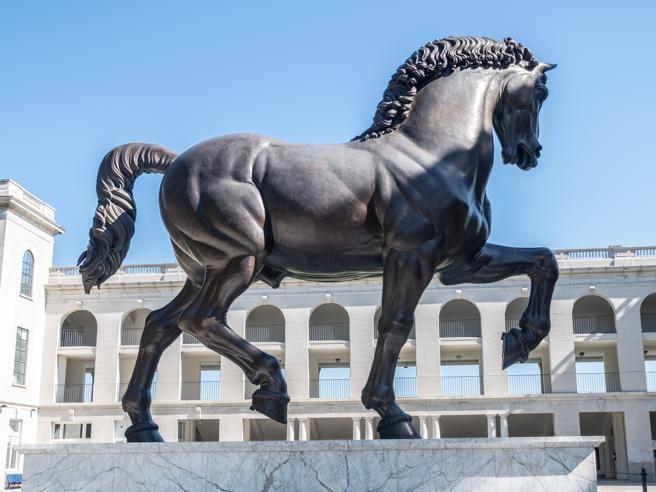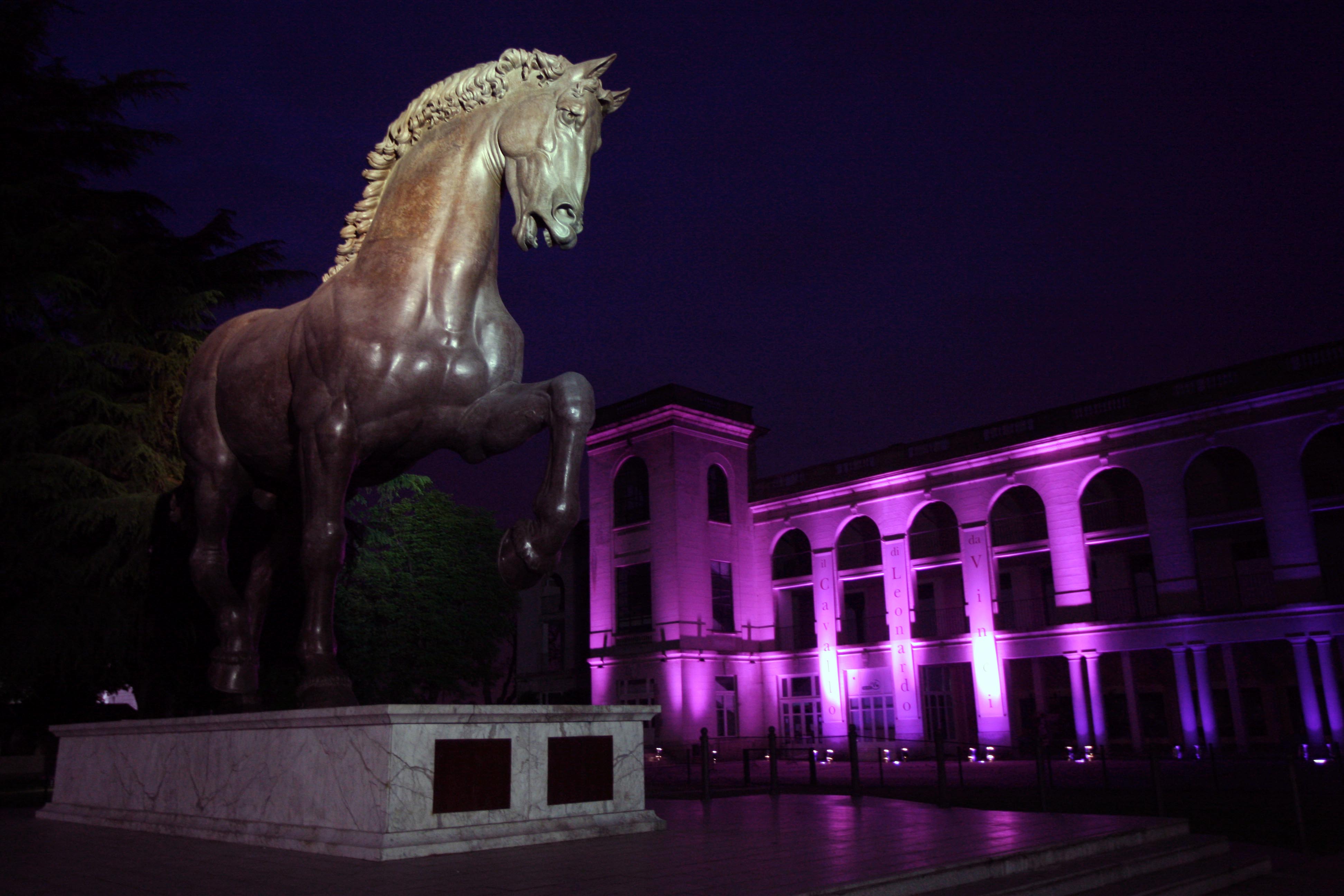
Piazzale dello Sport hosts Leonardo’s horse, one of the largest equine bronze sculpture in the world created by artist Nina Akamu and fully inspired by the original Leonardo Da Vinci’s sketches. The original cast was commissioned in 1482 by Duke of Milan Ludovico il Moro, in memory of his father Francesco.
Tall: 7,30 meters (24-foot)
Weight: 10 tons
Tall (from basement): 2 meters
Cavallo di Leonardo Area
Leonardo’s Horse and the GAMI, Galleria Archivio Multimediale Ippodromo, in Piazzale dello Sport 6, are open to the public every day from 10am to 7pm. Access is free.
The initial design of the statue, which has become “Leonardo’s Horse”, dates back to 1482, when Ludovico il Moro proposed to Leonardo da Vinci the construction of the largest equestrian statue in the world, in memory of his father Francesco, founder of the Sforza family.
At that time, the statue constituted a colossal project: not only by dimension but also in terms of position. Indeed, Leonardo’s initial idea depicted the horse in a rearing position, in the act of pouncing on enemies.
The initial design turned out to be too difficult to be realized and in 1491, Leonardo presented a second version, realized using a clay model, with the horse that would rest on three legs. The dimensions were still enormous: more than seven meters tall and 100 tons of bronze envisaged for the casting.
Leonardo dedicated a significant amount of time studying the anatomy of horses and realized a perfect work: two years were needed to realize the clay model. On public exhibition it had to be covered by a layer of protective wax and the terracotta casing needed for the casting.
Unfortunately, the war ruined the project: France invaded the Este ducky and the bronze stored for the horse was used to produce cannons. In 1499, the French troops invaded Milan and forced Leonardo to flee thus abandoning the clay model. Such model, according to tradition, was used as a target by the French crossbowmen, who destroyed it completely.
Leonardo resumed the project on a few occasions, but never finished it.


Five centuries passed before Charles Dent, an American pilot and art collector, became aware of the history of the unfinished horse: Dent created Leonardo da Vinci’s Horse Foundation (LDVHF), and with a 15-year fund-raising activity, he succeeded in reaching the sum needed (approximately $ 2,5 million), in order to realize the imposing statue. However, he was never able to see his dream come true: Charles Dent died in 1994, and once again the project seemed to be forgotten forever.
Fortunately, the owner of a supermarket chain in Michigan, Frederik Meijer, took over as the head of the LDVHF: the realization of the Horse was commissioned to the US sculptor Nina Akamu. After an initial model that was approximately three meters high, the final clay model was realized, which was almost eight meters high, and used to create the casing for the bronze casting.
The LDVHF decided to donate the Statue of the Horse to the city of Milan as long as it would have been exhibited in a location approved by the Foundation and capable of hosting safely the work. Among several proposal received, the Foundation selected the Milan gallop racecourse.
Divided into seven parts, the Horse arrived in Milan in the fall of 1999: Leonardo’s dream and later Charles Dent’s dream were realized in September of the same year when, once the pieces were assembled together, the statue of the Horse was presented in a solemn ceremony, and installed at the entrance of San Siro racecourse.

